who or what determines art trends
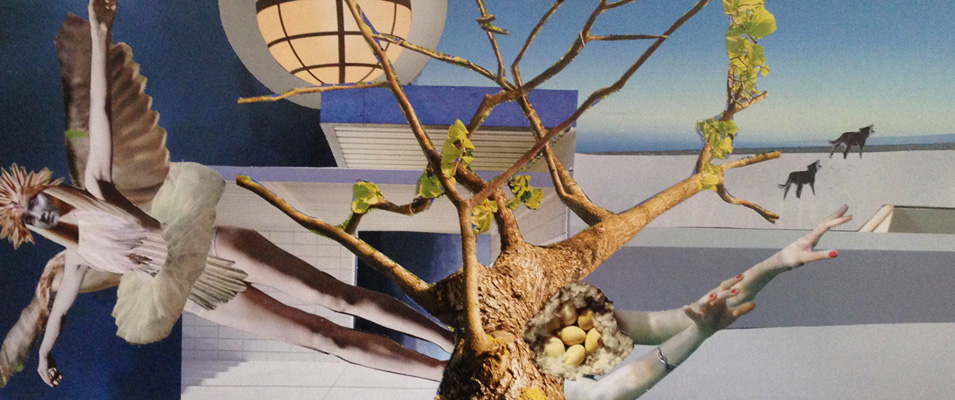 When I was an art student, abstract art was just coming into its own. Realism had its run with the impressionists and then came the abstract expressionists with their specific kind of emotional and visual imagery. In my art classes I spent much of my time learning how to push paint around, using sand and other foreign materials mixed with the paint in order to discover a more visceral surface texture. Just as I was getting the hang of this abstraction, expressionism was in with all its bloody protest imagery. It was the 1980’s when the photorealists with their refined illustrative skills took over the galleries. Chuck Close and Audrey Flack were two of the stars of this movement.
When I was an art student, abstract art was just coming into its own. Realism had its run with the impressionists and then came the abstract expressionists with their specific kind of emotional and visual imagery. In my art classes I spent much of my time learning how to push paint around, using sand and other foreign materials mixed with the paint in order to discover a more visceral surface texture. Just as I was getting the hang of this abstraction, expressionism was in with all its bloody protest imagery. It was the 1980’s when the photorealists with their refined illustrative skills took over the galleries. Chuck Close and Audrey Flack were two of the stars of this movement.
The reason I mention any of this is because I feel we have just come through a period of art that did not serve the artist well. Creativity suffers at the hands of businessmen, who in the last two decades determined what was marketable and what was not. Art is, after all, a business and the artist a pawn who is bought and sold in the market place. Large corporations dictated what had value and warehoused the work they collected. It was as if they were collecting the artist and didn’t much care about the art. Large amounts of money was invested with the art world scrambling to be part of it. To me this felt like the death of art. It was as if the more an artist could shock the sensibilities of the public, the more well known the work became.
This leads me to the question “who is determining what is art?” I was watching a show on the Ovation channel about how six art graduates were chosen to live and work in New York City as cameras followed their progress. What was interesting about this was how there were very few painters who applied for this opportunity. When asked why this should be, the answer was simple, the universities are not turning out painters these days. It seems the colleges are pushing digital photography, video and installation art. So it appears it’s the educational system, the higher institutes of learning, who are now dictating the direction of the art world.
While fewer art students are studying painting, it seems to me many of the galleries in Chelsea are still showing and selling works on canvas. The way I see it, drawing and painting is a personal and spiritual art form that needs to keep reinventing itself to remain fresh but is not going anywhere soon. So as long as the human spirit has the need to leave its mark, I feel confident painting will survive.
the price of juried exhibits
I’m annoyed at how the price of juried exhibits has escalated to the point where artists are actually being excluded because they can't afford them. Something about this just feels wrong. The purpose of having these juried shows, I thought, was to give emerging artists a place to exhibit. It’s how artists become seasoned. It’s  the way they meet other artists, the way they compare their work to other artists and the way they build a resume. This is an age-old system all artists have to go through, but I am increasingly concerned about the motives of the promoters of these exhibitions.
the way they meet other artists, the way they compare their work to other artists and the way they build a resume. This is an age-old system all artists have to go through, but I am increasingly concerned about the motives of the promoters of these exhibitions.
Years ago when I was a member of the Philadelphia Artist Equity they had taken a no fee stand on juried exhibits. It was a large and important organization which had a big influence in the art community…strength in numbers. It actually stopped the fees because artists stood together and boycotted shows with a pricetag.
There’s a sense of helplessness about entering these exhibits. The artist population is somewhat at the mercy of the establishment. Many of the galleries that offer juried exhibitions do it to make their rent. I know what I’m talking about, I was once a member of a co-op gallery in New York and was unwittingly part of this process. Sadly, there’s something that feels desperate about it.
What’s the answer? I propose that a gallery or organization find another way to make the funds to run one of these shows. Applying for grants is one way of bringing in money, or having a fundraiser, or charging a membership that gives a free entry to their juried exhibition... museums offer this, or, at the least, just charge artists whose work is accepted into the show.
Do we not exhibit our work because there’s a fee, or do we gulp down our pride and do it anyway? I think we have an obligation to seek out and support the no fee shows. They’re out there. As artists we need to show a stronger, organized presence.
the obligation between gallery and artist
I find it inconceivable, with all the galleries that have sprung up in Chelsea, that the gallery owners aren’t more open to meeting with artists. In fact, in many of the galleries, the common response is, “We’re not looking for artists at this time.” Well excuse me, I’m confused. I thought the galleries main reason for staying in business 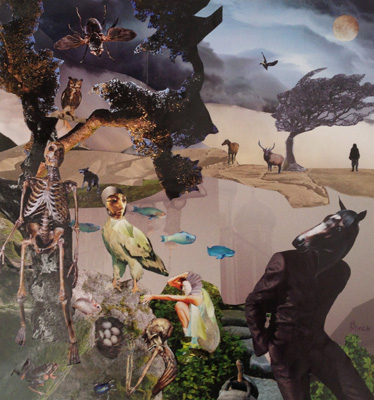 is to sell art. I know too many accomplished artists, who after many hard years of perfecting their craft and sacrificing their personal lives, are still unrepresented by a gallery. Something feels odd about this. Art galleries sell art, artists make art, there should be a better communication between the two…some kind of dialogue, at least.
is to sell art. I know too many accomplished artists, who after many hard years of perfecting their craft and sacrificing their personal lives, are still unrepresented by a gallery. Something feels odd about this. Art galleries sell art, artists make art, there should be a better communication between the two…some kind of dialogue, at least.
In the early days of my painting career, the OK Harris Gallery and Nancy Hoffman Gallery, both at the time in Soho, were two of the most accessible places for artists to approach. Nancy Hoffman had days she would look at portfolios and Ivan Karp was always available to artists off the street. While he was frank and to the point, his passion for the artist and their work was always apparent. I valued the time he gave me every time he said, “No thanks.” I grew from the experience. Perhaps this is what they call “paying your dues".
It saddens me to see so many wonderful artists working in the shadow of the art world without representation. I realize there are degrees of vision and talent and not every artist who walks through the doors of a gallery has the same esthetics as that gallery, but communication can give an artist the kind of hope that might make the difference in their future work.
So it seems to me, without the artist there would be no need for the gallery. I would just like a better dialogue between the two…I’m just saying.
the untapped talents of older women artists
From the start of my career I understood the art scene was mostly dominated by male artists. In fact, all through history I could count on one hand how many women actually came to any fame from their art…never mind making a living from it. And yet, I find it hard to believe the women weren’t out there working their hearts out, sacrificing their quality of life just for the chance to make art. Even today the galleries are still dominated by male artists and I’m confused to understand why.
 This brings me to an article I read recently about how there’s this growing population of older female artists who have worked their entire lives with little recognition. This is truly an untapped treasure of work that needs to be discovered. There’s an honesty in work that struggles through adversity and still finds its own power without compromise. It’s art that has something to say. While there are many women’s art exhibits today, there’s still a sense of exclusion about them. I don’t like my work to be labeled as female. I would like to think when someone looks at my work they are excited about what they see, not the fact that I’m a woman. I don’t want my work to have a gender.
This brings me to an article I read recently about how there’s this growing population of older female artists who have worked their entire lives with little recognition. This is truly an untapped treasure of work that needs to be discovered. There’s an honesty in work that struggles through adversity and still finds its own power without compromise. It’s art that has something to say. While there are many women’s art exhibits today, there’s still a sense of exclusion about them. I don’t like my work to be labeled as female. I would like to think when someone looks at my work they are excited about what they see, not the fact that I’m a woman. I don’t want my work to have a gender.
While there might be more women in the galleries today than in the past, the galleries are still dominated by men. It seems that hasn’t changed much. So I want to send out a challenge to those who have opportunities for artists not to forget the rich and talented population of older women artists. They have years of skill and insight developed in the shadows of an art world that can gain from their point of view. There are more galleries in New York today and I hope they have become sensitive to the depth of talent still waiting to be discovered.
when talent meets skill
 As a college freshman studying art, I had to first learn the theory of art before I was allowed to paint. I studied the rules of color and composition, learned to understand good design and spatial concepts. So much of what I learned was about control with little flexibility. Most of the students’ art had a similar look, which mimicked what was being shown in the galleries of New York. The students who excelled in class were those able to perform what was asked of them without difficulty. I wasn’t one of them.
As a college freshman studying art, I had to first learn the theory of art before I was allowed to paint. I studied the rules of color and composition, learned to understand good design and spatial concepts. So much of what I learned was about control with little flexibility. Most of the students’ art had a similar look, which mimicked what was being shown in the galleries of New York. The students who excelled in class were those able to perform what was asked of them without difficulty. I wasn’t one of them.
As a young student aspiring to be an artist, I struggled with art history and all the academic subjects behind making art. I didn’t learn to appreciate any of it until later when I started to achieve on my own. I was told at the time that one percent of one percent of art students ever made it big. So why did so many of us still want to pursue art careers? It certainly wasn’t for the money.
You don’t go into art thinking you’re not talented. Something has to drive the need to work long hours in isolation with little recognition. For me it’s not just the inherent need to make art, but the innate knowledge I have the talent to do it. I see now how my earlier training is actually the engine that allows my work to find its voice. It’s the skills I’ve learned and continue to learn that moves my work forward.
So the way I see it, it isn’t enough to just have a natural ability or aptitude to create, I also have to be vigilant about developing new skills. I need to remain curious about new ideas. It’s the combination of talent and skill that distinguishes my work from what’s already out there.
how to view a painting
I heard recently that the average gallery goer actually looks at a work of art for about thirty seconds before moving on to the next work. This is discouraging news since it takes anywhere from two to four months to complete one of my paintings. I would like to think my time and effort are worth more than a cursory glance in passing.
I've written before about working large to make an impression, which is one way of getting attention, but 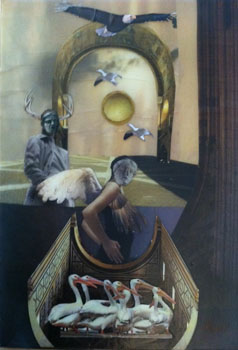 there has to be something more to keep the viewer's interest. When I was ten years old I went with my father to the museum and saw an exhibit of surrealist painters. I still remember in detail a large painting of a tree composed of little babies. My father and I stood in front of that painting trying to guess how many figures we could count in it. Also that day I saw for the first time Salvador Dali’s painting “The Persistence of Memory”. I know for sure we stood in front of those paintings for longer than thirty seconds. It was something I would not forget all these years later. I think that experience had a big influence on my becoming an artist.
there has to be something more to keep the viewer's interest. When I was ten years old I went with my father to the museum and saw an exhibit of surrealist painters. I still remember in detail a large painting of a tree composed of little babies. My father and I stood in front of that painting trying to guess how many figures we could count in it. Also that day I saw for the first time Salvador Dali’s painting “The Persistence of Memory”. I know for sure we stood in front of those paintings for longer than thirty seconds. It was something I would not forget all these years later. I think that experience had a big influence on my becoming an artist.
While I've written about working large to make an impact, using subject matter that's layered with meaning, has a better chance of lingering in the viewer's mind long after it’s been seen. I don't mean obvious imagery that preaches and tells you what to think. It’s in the subtlety of subject matter that allows the viewer to draw his or her own conclusions. This gives the work power.
I've been told my large acrylic paintings makes the viewer uncomfortable. This is often typical of surrealism. If nothing else, it has given me a kind of freedom to take chances and force the viewer to have a kind of dialogue with the work. Hopefully this will make them linger longer than thirty seconds.
the chinese art scene
I write this blog while in China. I'm overwhelmed, to say the least, by the changes here in Shanghai from the last time I visited. This is not the China of ancient times with Starbucks now on almost every corner. I feel right at home because of it.
So what kind of art scene do they have here? I can only say it's in the early stages similar to when Soho first became a major scene. There is a growing area of galleries in the warehouse section called Moganshan Lu. It's still a little raw with large and small concrete spaces that don't yet have the sophistication of the New York art scene, but I can see it's only a matter of time before this place evolves. I found some good work here.
The artist Wei Yi’s large oil paintings of rural laborers was inspiring. This series of paintings takes us into the homes and lives of how a large part of the population exists in China. In this collection of somber brownish paintings Wei Yi uses full scale images of laborers who are bachelors working to save enough money to marry...their hard existence shows on their weathered faces. The work has freshness while using a limited range of color.
 Another artist who impressed me was Yang Zhenzhong. His large photographic installation of women sitting at a long table viewed from the knees down was placed in the gallery space in photographic sections, which were tilted in various directions and held in place by wires that reached floor to ceiling. The viewer can walk through the installation as if it were a photographic landscape, yet when seen through a peephole positioned in front of the sections of photos, the larger picture comes together as if one photograph. In order for this piece to work a mathematical precision was needed to create the right perspective.
Another artist who impressed me was Yang Zhenzhong. His large photographic installation of women sitting at a long table viewed from the knees down was placed in the gallery space in photographic sections, which were tilted in various directions and held in place by wires that reached floor to ceiling. The viewer can walk through the installation as if it were a photographic landscape, yet when seen through a peephole positioned in front of the sections of photos, the larger picture comes together as if one photograph. In order for this piece to work a mathematical precision was needed to create the right perspective.
There's still a degree of unspoiled vision in the best of the work in China from what I can see. While the country is going through transition, the artwork at its best is reflecting it. This kind of documentation 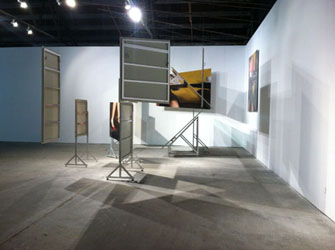 records the country’s visual, emotional and intellectual history of a changing time, and again, this is what the artist does best.
records the country’s visual, emotional and intellectual history of a changing time, and again, this is what the artist does best.
transforming small ideas to large paintings
I happened to have seen an interview with James Rosenquist on the Ovation channel’s Artland series. He is a refreshing man who speaks about his early days as a commercial sign painter, which is where he learned the skills needed for his large scale paintings today. He made it clear he wasn’t one of those “wall dogs”, a name given to artists who were given the job of painting the walls before the design was applied. He describes how he had to repeat the image of a beautiful woman until he was able to do it in his sleep. He has an enormous studio in Florida where he creates large paintings taken from the collages he creates. He feels the size of his  work is what gives it power. Yes, size matters here. It’s at the core of what makes his work stand out. When asked if he had problems transforming small ideas into larger work, he laughed and said, “Never.” He claims his painting translates well to size because he can handle the paint.
work is what gives it power. Yes, size matters here. It’s at the core of what makes his work stand out. When asked if he had problems transforming small ideas into larger work, he laughed and said, “Never.” He claims his painting translates well to size because he can handle the paint.
I loved hearing this since I’ve been saying forever, the larger my work gets, the more noise it makes. You can’t walk past a large canvas without glancing at it. While I don’t have a large factory-sized space to work in, I’m becoming more adventurous in how I work. I no longer think small and that’s the difference in the conception of new work. There’s a sense of ambition and scope in larger paintings which presents a greater challenge. You have to be a good painter to pull it off. Flaws are easily noticed when skills are not at their best. However, there’s also a kind of freedom that comes with using large brushes. It’s a more physical experience, and for me, that's what energizes the work.
I'm becoming more inventive these days as my canvases grow larger. By thinking large my collages are getting more ambitious. This gives the paintings a new kind of excitment. I'm experimenting again and this has me in my studio pushing myself again. I think we should never allow ourselves to become lazy or complacent and by working out of my comfort zone I'm able to grow as an artist.
angels and tomboys: girlhood in 19th century american art
I recently saw the exhibit at the Newark Museum, “Angels and Tomboys: Girlhood in 19th Century American Art”. The show consisted of artists John Singer Sargent, Winslow Homer, Thomas Eakins, William Merrett  Chase as well as female artists Cecilia Beaux, Lilly Martin Spencer and Bessie Potter Vonnoh whose work reflected the attitudes towards girls around the time of the civil war in America. The themes are mostly of family life and the place these girls had in society.
Chase as well as female artists Cecilia Beaux, Lilly Martin Spencer and Bessie Potter Vonnoh whose work reflected the attitudes towards girls around the time of the civil war in America. The themes are mostly of family life and the place these girls had in society.
Since I’m a painter myself, I was particularly intrigued with the narrative approach these artists used to create an idyllic sense to the girls they painted. Often the colors were soft and had a purity with spontaneous brushstrokes. While these are American artists, the European influences are there in the techniques used. There are also paintings done by itinerant primitive artists who went from town to town painting wealthy children in stylized poses. They used pure red colors in their stylized work, which seemed to distinguish their works at the time. Some of these paintings are in the exhibit as well. I find it interesting how paintings of 19th century boys were painted in active poses, while girls had a more passive demeanor. This reflected the attitudes of how society saw women at the time.
If you like good painting this is the show to see. While it’s a visual history of family life during the 19th century, it’s also a measure of how far women have come today. It’s great to see how these paintings have endured and continue to attract an audience.
This show will be on view until January 20th.
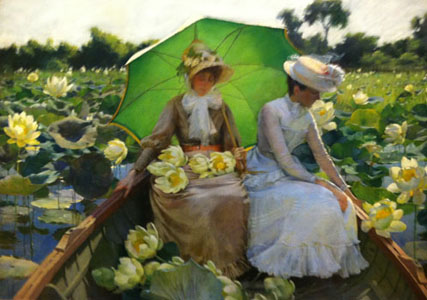
what is surrealism?
Since I find myself working as a surrealist after all these years, I decided to find out just what I really got myself into. Surrealism started in 1920 as a cultural movement. It’s the element of surprise and the juxtaposition of imagery that brought it to the attention of the public during the period around World War 1. It was a movement embraced by writers, painters, filmmakers, musicians, philosophers and lawmakers which came out of the DaDa movement and was centered in Paris. Well-known surrealists are Salvador Dali, Max Ernst, Man Ray and Joan Miro.
None of this had any impact on me until recently when I started working with collage. What brought me to this form of expression was the way collaging pushed my compositions to the absurd. I was looking for another 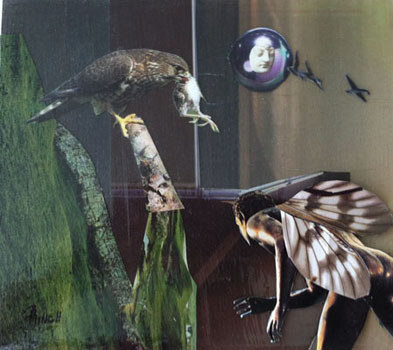 way of expressing myself and I found this journey into the unknown intriguing and a little bit intimidating. Since there aren’t any guidelines to follow outside of my own intuition, I have no clue where I'm going until I'm finished. What I find most interesting is how this new fascination with the unusual and bizarre allows me to get into my subconscious. It’s in my collages that I’m able to free myself and allow anything to happen. I’m often surprised by the imagery which opens limitless possibilities to me. The rules for this form of art are different from those of the photorealists, which is my background.
way of expressing myself and I found this journey into the unknown intriguing and a little bit intimidating. Since there aren’t any guidelines to follow outside of my own intuition, I have no clue where I'm going until I'm finished. What I find most interesting is how this new fascination with the unusual and bizarre allows me to get into my subconscious. It’s in my collages that I’m able to free myself and allow anything to happen. I’m often surprised by the imagery which opens limitless possibilities to me. The rules for this form of art are different from those of the photorealists, which is my background.
When I was a young girl my father took me to the Metropolitan Museum of Art where I saw this strange man dressed in white like Colonel Sanders. He stood in front of a painting of melting clocks, leaning on his white cane with a diamond handle and was twisting the tip of his long mustache. My father told me he was the artist Salvador Dali. At the time it didn’t mean anything to me, but I was so taken by the man that I never forgot the moment I saw him. Little did I know how much his work would have an influence on me all these years later.
after the storm
I feel like I've been dream-walking these past two weeks. Getting through the worst hurricane recorded in over thirty-five years was a frightening experience, but it was the loss of electricity that tested our resilience. Life became dependent on the daylight. I’m a night person and this turned my days upside down. I was, however, 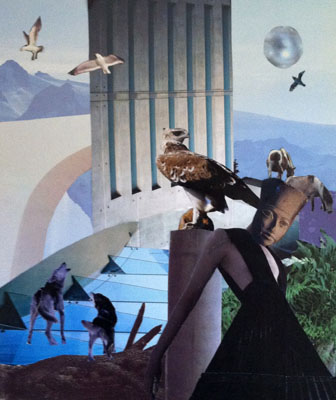 luckier than many because I did have a generator, which we purchased after last year's blackout. Our challenge was in finding gasoline to keep the generator running. Yes, my husband was one of those lost souls wandering from one gas station to another. Everyday brought a new challenge as many of the stations ran out of gas. My heart goes out to those people who are still without heat and electricity.
luckier than many because I did have a generator, which we purchased after last year's blackout. Our challenge was in finding gasoline to keep the generator running. Yes, my husband was one of those lost souls wandering from one gas station to another. Everyday brought a new challenge as many of the stations ran out of gas. My heart goes out to those people who are still without heat and electricity.
Now that my life has come back to what I used to call normal, I'm amazed at how much art I created during this period. As I said before, light became this golden commodity that couldn't be squandered. I actually found myself waking up at seven a.m. and going directly to my studio. I found the light was best between the hours of ten and twelve and remained good until three p.m. It became more difficult to paint in the fading light.
I had an overwhelming drive to create. Somehow, not having other distractions gave me a freedom I wasn't able to tap into before. I owed it to myself to dig in and see where it took me. During the evening hours, I was able to work on some large collages. I listened to a book on tape while I worked under two 100 watt lamps. The sound from the generators outside was like a marching band of lawnmowers creating a white noise that blocked out everything else.
When the electricity finally came back on five days later, I was shocked at how much work I had accomplished. I nearly completed a 48"x48" painting and was amazed with how loosely I had painted it. I didn't suffer over small details or stay to the original design. There was a freedom I hadn’t had before. I was so obsessed with getting the most out of the light that I seemed to have lost myself in the art. I completed four large collages as well.
This whole experience has been an invaluable lesson to me. There are too many distractions that pull me away from my studio and I need to take another look at that. In the end, allowing myself to not put expectations on myself seems to increase my ability to produce.
waiting for the perfect storm
I’ve decided not to post the blog I originally wrote for today, since I'm preoccupied with hurricane warnings on the TV. It seems the perfect storm is heading straight for us and while we are not yet asked to evacuate, the fear of having to do so is in the air. What surprises me is how this impending danger has energized me. There’s nothing I 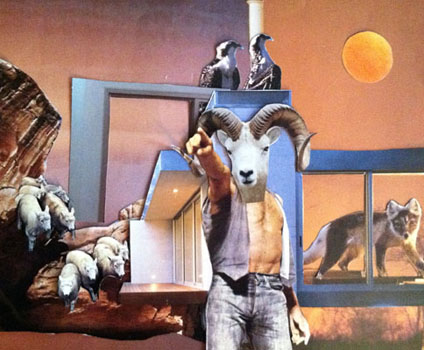 can do to avoid what’s coming, and yet, it’s become the fuel behind my need to paint today. I’ve been working all morning, taking a break only to write this blog.
can do to avoid what’s coming, and yet, it’s become the fuel behind my need to paint today. I’ve been working all morning, taking a break only to write this blog.
I’m listening to Steven King’s, “11/22/68” on my IPhone, which drowns out the sound of wind outside. It’s about a time-traveler who goes back to stop Lee Harvey Oswald from assassinating JFK. It’s a gripping story that has my mind engaged while I paint and block out the storm growing around me.
So my advice for today is to stay safe, tap into that nervous energy and listen to a good book.
how to approach a gallery
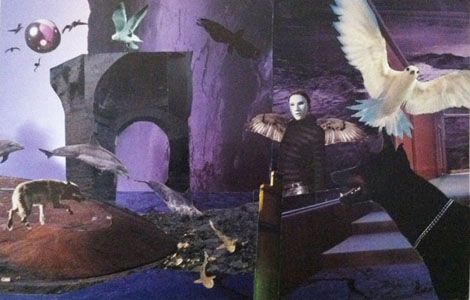 September opens the art season, and for me, this is the real beginning of the new year. I admit, I’m more of a winter person anyway, so I tend to be more energized at this time. I love Fall and the changing weather. There are less distractions to pull me away from my studio and this is a time I’m more preoccupied with my work.
September opens the art season, and for me, this is the real beginning of the new year. I admit, I’m more of a winter person anyway, so I tend to be more energized at this time. I love Fall and the changing weather. There are less distractions to pull me away from my studio and this is a time I’m more preoccupied with my work.
I recently went to Chelsea to check out the new season of gallery openings. It’s hard to believe how this area has expanded despite a bad economy. There are more galleries in the area than ever before. The boundaries of Chelsea are ever expanding. In the past I could see most of the art in one visit, but it will probably take at least three days or more now. There is just so much to look at. Many of the major galleries of the world have a presence here, which makes New York truly an exciting place for artists and art appreciators. I feel lucky living so close to it.
In general, I find the people at the front desks of these galleries to be friendly and easy to talk to. Many of the young men and women who greet the public are interns and are eager to share information about their gallery. It’s a good opportunity to find out what the gallery is about and whether they’re looking for new artists. My experience is they all say they’re not looking, but in fact are always interested in finding new art. One intern told me an artist has to find a way to get the gallery dealer’s attention. This is where the internet may come in handy. I noticed in one of the galleries the intern was scrolling through art websites. A good reason for every artist to have a website and a Facebook page. Also, it helps to visit the gallery often and talk to the people at the front desk. It can’t hurt to show an ongoing interest in the art shown there.
When contacting a gallery, you should send an email with resume and attached photos of the artist’s work. They contact only the artists whose work they're interested in. This is a lot more economical than the old way of sending slides. My advice is to make a list of galleries that suit your type of work and go for it.
trends in framing
When I go to the museums the first thing that hits me is the incredibly ornate, gold-leaf frames which often overpower the paintings. Many of these frames are a work of art on their own. Still, while the craftsmanship is inspiring, the combination of frame with painting is almost too much to take in. To my eyes they seem in conflict almost to the point where the painting loses it’s power.
So how did frames come to exist in the first place? They appeared three thousand to four thousand years ago on tomb paintings. Frames were used primarily as decorative borders in early Christian art using gold and gems in frames around the alters. Later the frames, while still ornate, were used to protect the art as well as decorate it. During the Renaissance, frames were commissioned by monarchs indicating wealth and power. Later these frames were copied for the average person to use.
on tomb paintings. Frames were used primarily as decorative borders in early Christian art using gold and gems in frames around the alters. Later the frames, while still ornate, were used to protect the art as well as decorate it. During the Renaissance, frames were commissioned by monarchs indicating wealth and power. Later these frames were copied for the average person to use.
This made me think how a frame might influence the way a painting is received. When I first started doing watercolors in the early 1980’s, they were framed with double mats and wood moldings. Soon came the silver and gold metal frames which were easy on the eye and less expensive on the pocketbook. They moved away from the heavier moldings and had a cleaner look overall on the artwork. Acrylic paintings were framed with wood stripping around the edges. In the 1990’s simple oak frames were favored.
This brings me to the latest trend in the New York galleries today. Most of the work is shown in white frames. The larger the painting the heavier the frame. I admit to liking this trend very much. It enhances the art and gives the work a sense of importance. The way a painting is framed depicts the times in which it’s shown. For that reason alone I feel it’s a good idea to know what’s being shown in the galleries and museums. These institutions influence the way art is accepted and frames of a time depict the way the artwork is seen.
art and technology
I realize that as long as I continue to be an artist, I'm always going to be a student of one thing or another. The need to stay current means I have the obligation to my art to be constantly aware of what's going on in the world around me. I say this because the world I live in now has advanced beyond anything I could have predicted. I’m floundering in technology that continues to change by the minute. I once thought I was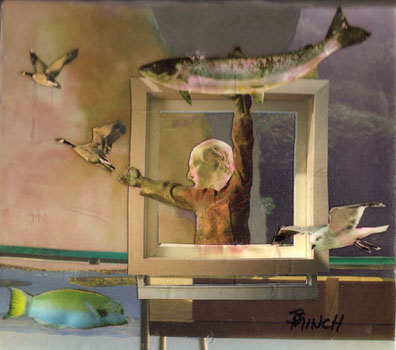 perfectly fine without getting involved in all the new cyberspace thinking. It was confusing, to say the least, and took up too much time. The hours I could have been painting were spent on the phone with computer techs who, thank goodness, were very patient with me. In those days, I thought it would have little impact on my art. How little did I know.
perfectly fine without getting involved in all the new cyberspace thinking. It was confusing, to say the least, and took up too much time. The hours I could have been painting were spent on the phone with computer techs who, thank goodness, were very patient with me. In those days, I thought it would have little impact on my art. How little did I know.
I can't believe now I was so resistant. The fact is, for every new advance that occurs, more people are being left behind. I don't want to be one of them. So many of my artist friends have resisted the computer technology and I think this is a big mistake.
This leads me to the reason why I mention this. If my work is to have meaning in the future, it has to be current with new developments today. To be an artist means to keep my mind open and embrace change, if for no other reason than for my art. It's in the tenacious conquering of obstacles that allows the unexpected to break through. I feel this is an exciting time for artists to develop. Anything goes these days and it's the artist's obligation to explore the possibilities.
Yes, I'm often frustrated as I plod through programs like Photo Shop and Illustrator, but I'm excited to find new ways of developing imagery. I feel like a student again absorbing all these new ideas that open up my thinking. I even find the art supply store an interesting place of discovery. Each time I go I'm faced with new kinds of products that get me thinking about new ways of approaching my work.
To be a student of art means there's still so much out there to discover and that after all these years is still what drives me.
inventive art
I’m a big fan of artwork that has a unique way of presenting itself. It’s not so much about subject matter as it is about the way the art is conceived. I want to be surprised by work that captures the imagination in a way I haven’t seen before. The biggest hurdle for the serious artist is to evolve past what is already taken for granted. But having said this, how is it possible in an art world where it seems everything has been done already, to come up with something never done before?
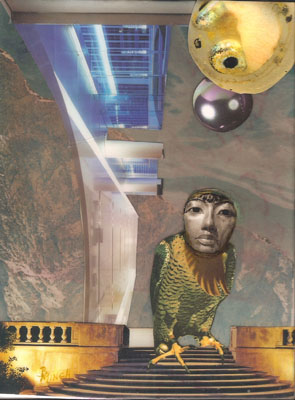 I recently posted a picture on my Facebook page of an artist who used hundreds of Rubik’s Cubes to create large photorealistic portraits. The inventiveness of his incredible art caught me by surprise. The realistic images were not in themselves unusual, but it was the obsessiveness of the medium that made this work memorable. I’m intrigued to know when and how the idea to create portraits with the difficult cubes occurred? The hours it must have taken to manipulate the colors to line them up just right is pure innovation. On another level, the method used in creating this work defines the times in which it was created.
I recently posted a picture on my Facebook page of an artist who used hundreds of Rubik’s Cubes to create large photorealistic portraits. The inventiveness of his incredible art caught me by surprise. The realistic images were not in themselves unusual, but it was the obsessiveness of the medium that made this work memorable. I’m intrigued to know when and how the idea to create portraits with the difficult cubes occurred? The hours it must have taken to manipulate the colors to line them up just right is pure innovation. On another level, the method used in creating this work defines the times in which it was created.
To my way of thinking, an artist has to bring something more to their art than just technique. Every time I see artwork that wows me, there’s usually some unique personal element that makes it stand out. I would hazard a guess that the artist who did those Rubik’s Cube portraits might have been obsessed with the cubed puzzle as a child. But it’s the way he combined it in his art, that is where the genius lies. What an exciting moment it must have been to actually get this to work. I can only imagine the high that came with it.
I take from this the need to incorporate my own personal experience into my work. It has to be something unique to me. This has me thinking about my own obsessions, and yes, the fears that determine how I see the world I live in. Now, not only do I look forward, but also look backwards into myself in order to get to my own unique vision.
time to just work
There are artists who move from one art class to another looking for shortcuts in various techniques. They are on the lookout for solutions to better their art. On some level I think it's great to keep your mind open to learning new ways of seeing, however, I find at some point seeking out another artist's methods can become a crutch. The way I see it, there's no easy way of becoming an artist outside of good hard work. This means hours alone in the studio pushing through the frustrations of finding new ways to advance my art.
So much of discovery is trial and error. Without the hours of exploration there would be no breakthroughs. There would be no innovation that allows art to evolve beyond what it already knows. I feel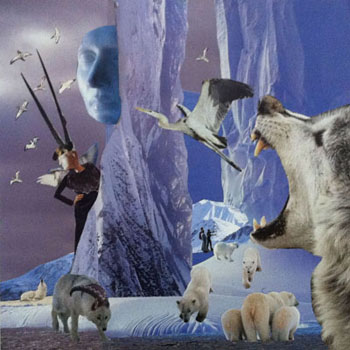 strongly, great art involves digging deep to get to that place where the process of creation becomes organic. It's that place where you become obsessed with an idea and can't let go of it. It's a journey to some unknown destination and you have no idea what you're looking for until you find it. I love when that happens.
strongly, great art involves digging deep to get to that place where the process of creation becomes organic. It's that place where you become obsessed with an idea and can't let go of it. It's a journey to some unknown destination and you have no idea what you're looking for until you find it. I love when that happens.
Art is about discovery and problem solving. It takes tenacity and a determined commitment to put in the hours of work without distraction. The creative process can't be rushed, and there's no short way around it. The only way to make art is to be in the studio working. Original art needs to seed and grow into its own unique voice without the influence of an instructor.
Artists need the support of other artists. It’s my art friends who keep me informed and current. If I need an opinion I always know who I can go to, but nothing advances my art like putting in long hard hours. So I say, get into the studio, turn off the phone and get to work.
metaphor in art
By definition a metaphor is a figure of speech or a comparison between two unlike objects that have some kind of common ground. It’s not a literal representation, but an abstract concept. But most of all, a metaphor elevates an idea into something more layered than the actual reality itself. This is something I learned from 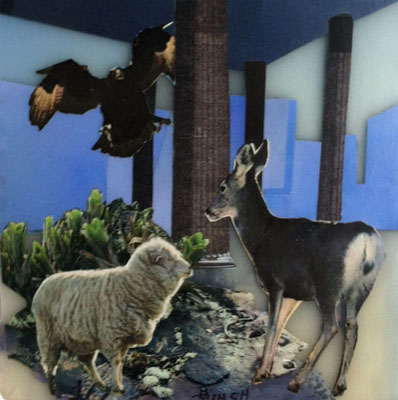 writing poetry. When an image makes me think without hitting me over the head with the obvious, I’m more likely to connect with it on a personal level and be touched by its insight.
writing poetry. When an image makes me think without hitting me over the head with the obvious, I’m more likely to connect with it on a personal level and be touched by its insight.
As an artist, I’m constantly looking for new ways to express myself. With so much art crowding the galleries, I ask myself, how does anyone come up with something new? It seems as if I’ve seen everything in one form or another before. So when I come across an artist whose work catches my attention, I want to know why.
We see metaphors in life all the time, if we know what we’re looking at. It’s everywhere in advertising, for example, the landscape composed of a slab of beef made to look like a rocky terrain using strips of bacon as a fence. It's the bacon they're selling with a vision that sticks in the mind.
This is why I’m always on the lookout for that new voice in art that has the ability to present itself with a different twist.
So my conclusion is to keep my eyes open for unusual comparisons which might give my work a new and fresh way of seeing what might otherwise be a tired cliché.
conquering frustration
To be at the beginning of an idea is the most exciting part of creating. It opens up all kinds of possibilities, and since I have an obsessive personality, I can become totally absorbed by it. It’s almost like falling in love the way it becomes all consuming. However, while coming up with something new is energizing, it can also have a downside. At some point what seems like a good idea may fail in execution and it’s in the frustration of working through it where the danger of giving up lies.
It’s important to embrace frustration and make it a fueling force. Although this might be easier said than done, without the tenacity to conquer a persistent problem, there will be no advancing art. It’s the first thing I try to instill in my “How to Draw” classes. It’s all about pushing boundaries. If there are no chances taken, nothing will happen. Interestingly enough, I can always tell if a student will progress in my classes due to the way they solve problems. Every class has its stars, the student who catches on quickly and excels past the others…but it’s the student who struggles through their frustration and conquers it, who tends to advance to the next level of skill.
instill in my “How to Draw” classes. It’s all about pushing boundaries. If there are no chances taken, nothing will happen. Interestingly enough, I can always tell if a student will progress in my classes due to the way they solve problems. Every class has its stars, the student who catches on quickly and excels past the others…but it’s the student who struggles through their frustration and conquers it, who tends to advance to the next level of skill.
There will always be failures with my work, still I see this as an opportunity. If something isn’t working, I have nothing to lose except to solve it. And there lies the answer. If I approach my work with a sense of play, I’m more likely to work through my frustration and give myself permission to explore beyond the boundaries of what I already know.
romare bearden
I recently saw an exhibit of Romare Bearden's collages at the Newark Museum. While I've not been a follower of his work, I found this show particularly exciting because of its almost innocent and imaginative scope. His collages had musical and family themes, but it was the sense of experimentation that spoke to me most. His  collages were large with cut up magazine photos of faces recreating a fractured imagery that came together in a unique kind of reality. What impressed me most was how experimental his work felt. He repeated images by using Xerox copy techniques. He painted, drew and collaged into his large works with the spirit of a story teller.
collages were large with cut up magazine photos of faces recreating a fractured imagery that came together in a unique kind of reality. What impressed me most was how experimental his work felt. He repeated images by using Xerox copy techniques. He painted, drew and collaged into his large works with the spirit of a story teller.
While I understand how collage artists have the ability to bring a kind of deconstructed reality into their work, it's the idea nothing is sacred, anything goes, that got my attention in Bearden's work. It inspired me to get back into my studio and approach my own work with a whole different mindset. Bearden was not a purist. He used whatever it took and did not restrict his imagery to conventional techniques of his time.
I've written before about why I go to the galleries. This is an example of how I'm affected by what I see. When another artist's work touches me, my own work is better for it. What I took away from this exhibit was the spirit of discovery...the obsessive need to reinvent an old image and make it new again.
I can’t say it enough, in order to grow I have to see what other artists are doing. Good art is contagious.
Wells Blog
Duis mollis, est non commodo luctus, nisi erat porttitor ligula, eget lacinia odio sem nec elit. Maecenas faucibus mollis interdum. Nulla vitae elit libero, a pharetra augue.